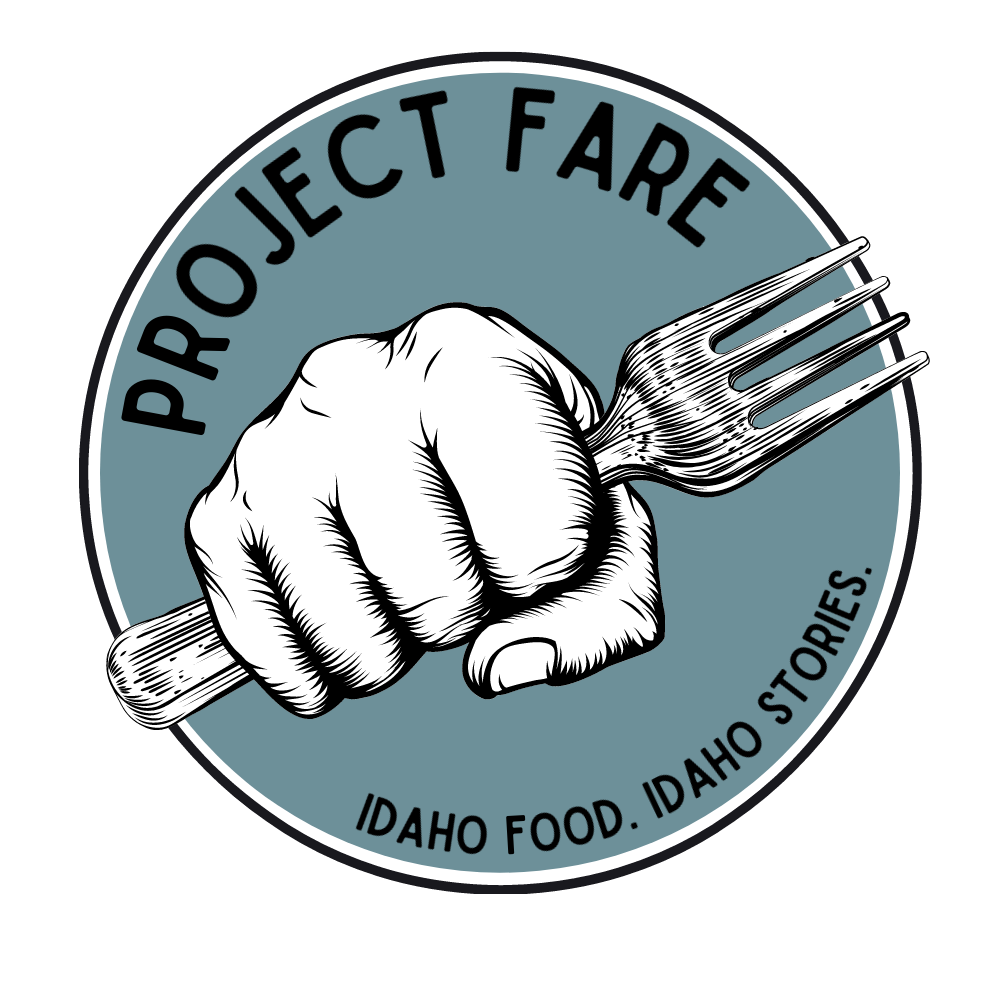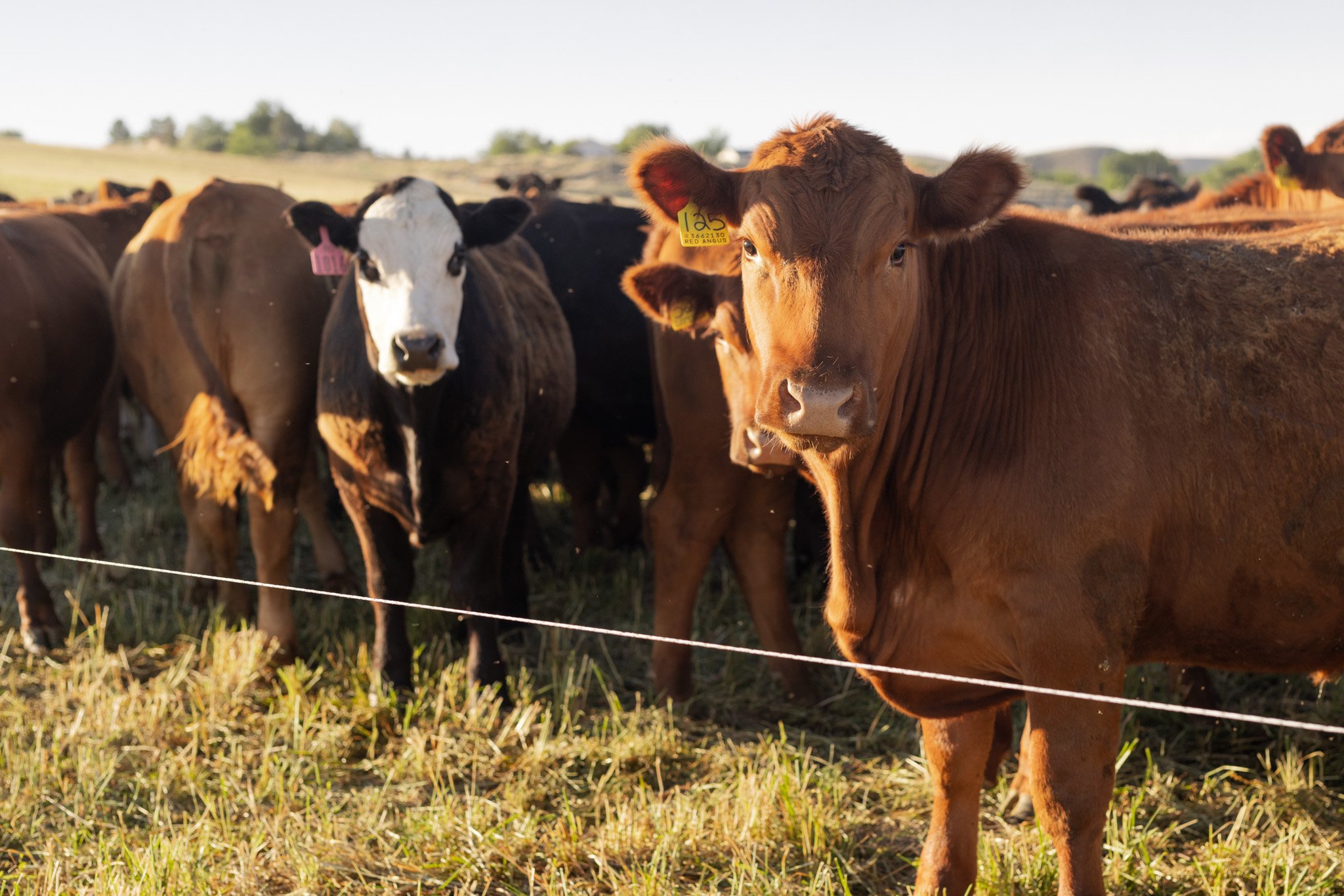Connecting the dots: Idaho’s agriculture, water and food
Cows in an Idaho herd. | Project FARE file photo, Jake Smith
As the state’s agriculture industry grows, so do the issues around the water used to nurture it
This story is the first in a pair about water and agriculture in Idaho. The first: How changing snow and rain patterns challenge Idaho farmers and water managers
DROUGHT IN IDAHO
Nearly 90% of Idaho is in the "abnormally dry" stage of drought or above, according to the U.S. Drought Monitor. The more severe stages of drought are located in the southern portion of the state, but higher demand on irrigation as well as lower levels of snowpack are symptoms of drought that extend up into North Idaho. However, none of Idaho is considered to be in "exceptional drought," which is the highest level where hydropower production would be affected and wildlife habitats are degraded. Roughly 35% of Idaho's population lives in areas suffering from drought, and 29 of Idaho's counties have disaster designation from the USDA.
Idaho is known for agriculture—particularly potatoes—across the world. In a state with plenty of land for farms, ranches and dairies, there is also an abundance of water. Without water to sustain Idaho’s most famous crops, the state would not rank first in the nation for the production of potatoes, trout, barley or peppermint. Idaho ranks in the top five nationwide for many other products like dairy, wheat, sugar beets and more.
However, ongoing droughts are affecting the amount of water Idaho has available to put toward agriculture. Growers and residents alike are looking at a future where they must prioritize how and where they use water.
University of Idaho professors Erin Brooks and Linda Schott discuss their work while installing sensors on irrigation sprinklers in southern Idaho. | Photo courtesy of UIdaho CAFE, Jessica Machado Photography
Water for Crops
In 2021, Idaho ranked second in the nation for water withdrawn from waterways for irrigation, with 97% of the total 17 million acre-feet of withdrawn water in the state going toward irrigation, according to the Idaho Farm Bureau Federation.
Idaho’s irrigation water is sourced from one of two places: groundwater in the form of aquifers or surface water from streams, rivers and reservoirs. Some areas, particularly in northern Idaho, rely on weather more than irrigation to water crops that can handle lower quantities of water, like wheat, hay or lentils.
Surface water is used in most places for both irrigation and drinking, said University of Idaho agricultural engineer Erin Brooks, but Idaho has many aquifers to source from as well. For example, nearly all of the water in Moscow and Pullman, Washington, is sourced from two aquifers, the shallower Wanapum and the larger Grande Ronde.
An ongoing drought means there is less water in general to be put back into both surface water and groundwater sources. Less snow in the mountains during the winters means there is less water in the streams and rivers that fill reservoirs around the state. Decreasing levels of precipitation also means there is not enough water going toward recharging, or refilling, the aquifers many areas rely on. In some of these areas, users are taking water quicker than it is returned.
The majority of Idaho’s irrigation water goes toward crops in southern Idaho, where several reservoirs and the Snake River sustain the growing agricultural industry in the desert regions. However, water is a hot commodity in the desert and, even with all the water Idaho has access to, conservation remains a concern.
Because so much of Idaho’s agriculture is concentrated in this arid portion of the state, water rights and irrigation districts determine how much water is directed to each area’s needs.
One way farmers prioritize water usage is by rotating irrigation between crops depending on the season.
“If (farmers) are growing a grain that needs a lot less water and is harvested in late July or early August, depending on the year, it’s about that time when it gets really hot, and now they need to apply a little more water to their potatoes and sugar beets,” said Linda Schott, assistant professor of nutrient and waste management at UI.
Sometimes the water being used for irrigation already contains essential nutrients for crops, such as nitrogen. Farmers have to account for those nutrients when they calculate how much fertilizer their crops need, Brooks said. In places where farmers don’t rely on irrigation, they will often pile fertilizer on the fields before the spring rains and hope there’s enough rain to spread the fertilizer.
However, Schott said, both methods of fertilization have the potential to pour too much nitrogen into the soil. The excess is then washed away into Idaho’s waterways, where it could contaminate drinking water.
Water for Dairies
Crops aren’t the only portion of Idaho’s agriculture industry that is drinking up water. While dairies typically don’t take up as much water and crops do through irrigation, the industry is still a prominent part of Idaho’s agricultural water users.
Idaho ranks fourth in the nation for dairy production—only recently surpassed by Texas for third—with large corporations like Chobani and Horizon Organics located in southern Idaho. Horizon Organics states that they feed their cows off organic pastures without using pesticides, which can seep into waterways and drinking water.
“Water is pretty interesting on dairies because it’s recycled so many times,” Hibler said. “There’s really not a lot of water waste. We’ve been really innovative that way.”
But how much water does it take to run a dairy? Not any more than it would to grow crops, according to a 2013 study published in Applied Engineering in Agriculture. Among six Idaho dairies, which varied in size from 660 to 6,400 cows, researchers David Bjornberg and Bradley King found that an average of 110-250 liters of water was used for each cow every day over the course of two years.
“The average net water use was 35% of the estimated irrigation requirement for alfalfa, 54% of corn, and 63% of spring small grain in southern Idaho,” the study stated.
Tanya Hibler, the environmental services director at the Idaho Dairymen’s Association, said dairies are very efficient with their water, with some of them going as far as to use black piping on the roofs of their milking parlors to heat water with the sun instead of using water heaters.
The journey of water through a dairy generally begins in the chiller, where the milk is cooled down with cold water, according to Hibler. Once the water goes through the chillers, it’s put into troughs to be used as drinking water for the cows. Any excess water from there goes toward cleaning the parlors to keep the dairies sanitary.
By this point, the water in the dairy has already been recycled twice, but it’s not done yet. After cleaning the parlors, many dairies will use the leftover water to irrigate crops. Hibler said as water gets tighter, some dairy owners will switch out the crops they are feeding their cows with for plants that take less water to grow, such as swapping corn for sorghum.
“Water is pretty interesting on dairies because it’s recycled so many times,” Hibler said. “There’s really not a lot of water waste. We’ve been really innovative that way.”
Little Camas Reservoir, seen from the crest of its earthfill dam. | Project FARE file photo by Logan Finney
Water for Humans
While agriculture consumes most of the water drawn in Idaho, the state’s people need water, too. Idaho’s swiftly growing population means more water consumption and greater risk of groundwater contamination.
Exactly how much water the growing population will need is uncertain. A 2018 white paper from the Andrus Center for Public Policy reported there isn’t enough data to predict how the rising population will impact total water needs.
Groundwater makes up the majority of drinking water in the state, according to a 2015 report from the U.S. Geological Survey. If the groundwater the rising population relies is contaminated with nitrates from animal waste or leftover fertilizer, it could have adverse effects on their health.
Dairies and ranches are the most concerning source of nitrate pollution in groundwater, as reported by Boise State Public Radio. Animal waste is one of the largest sources of nitrates and is spread across thousands of acres in Idaho, where it can seep into groundwater sources.
Nitrates are necessary for crops to grow. But when people or animals are exposed to nitrates, it can affect their blood’s ability to carry oxygen. The Environmental Protection Agency set a maximum contaminant level of 10 parts per million for nitrates.
Agronomist Xi Liang, who studies soil management and crop production with UI, said there isn’t much information available about the long-term effects of prolonged exposure to lower levels of nitrates. Some communities have high nitrate levels in their drinking water, but not above the 10 parts per million maximum the EPA has set.
Excess phosphorus from fertilizers is also a part of the rising phosphorus levels in Idaho’s lakes and reservoirs. Phosphorus isn’t as much of a concern to health as nitrates are, but the buildup of phosphorus in larger bodies of water can lead to more toxic algae blooms.
While there isn’t much the state can do to clean the chemicals out of the water, prevention is a large part of the pollution solution, Liang said. Whether pollutants are seeping into the groundwater or being swept off into lakes and reservoirs, Shott said “dilution is the solution” tends to be the motto when it comes to finding ways to keep water clean.
Water, agriculture and the food people eat on a daily basis are interconnected on a deeper level than many know. Researchers are still learning about how to keep both the land and people safe, from monitoring how water is used for irrigation to keeping track of what pollutants can pose health risks.



